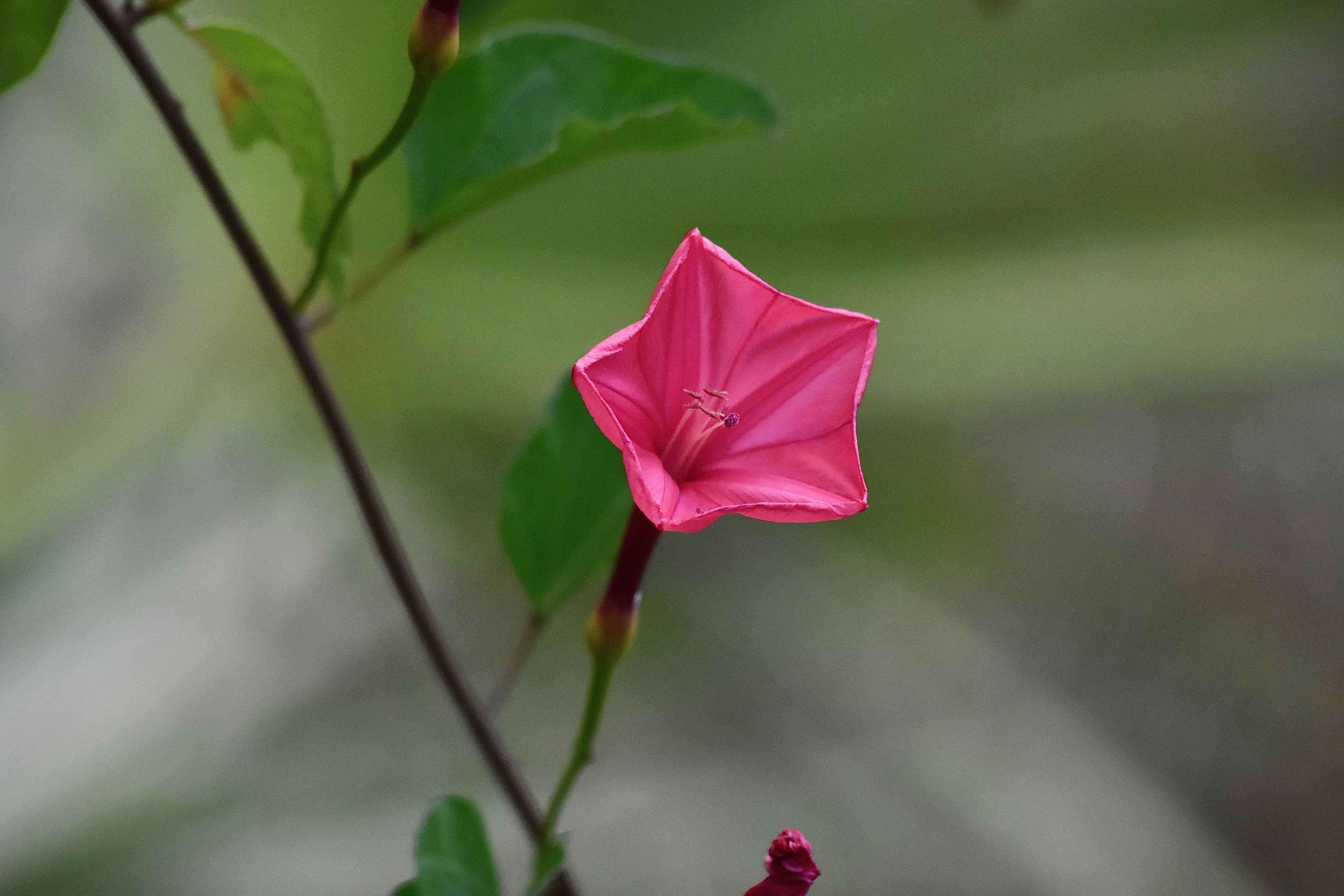
Man-in-the-ground, photographed at Everglades National Park, Homestead, Miami-Dade County, in May 2016.
No, man-in-the-ground has nothing to do with some guy falling into one of Florida's growing collection of sinkholes. Rather, it's the strange name of one Florida's rarest and most beautiful wildflowers: Ipomoea microdactyla — a scarlet-red morning glory found only in the pine rocklands of southern Miami-Dade County.
It is a typical morning glory in most ways but odd in one way you don't see unless you do a little digging. That oddity is also the inspiration for the name.
Miami-Dade is actually the northern-most part of man-in-the-ground's range. It's also found in Cuba, the Bahamas and, according to the Institute for Regional Conservation, Mona Island off Puerto Rico. Florida lists it as endangered but it is not federally protected. Oddly enough, Arizona lists man-in-the-ground as a prohibited weed and Arkansas lists it as a noxious weed. Both states pretty much ban all morning-glory species — even those with a snowball's chance of establishing themselves there.
Man-in-the-ground is a creeping or twining vine, with stems that can be five feet or more in length. Its leaves are lance shaped — long and relatively narrow. It flowers most of the year but peaks spring through fall, and goes dormant in the winter. The flowers are large, deep tubes, with five points. They attract a variety of nectar lovers, including bees, butterflies (mostly skippers) and hummingbirds.
The unusual feature it has are tubers that are similar in size, shape and function as sweet potatoes. These tubers store energy that helps get the plant through the winter dormant season. They also give man-in-the-ground resiliency in case of fire, which regularly occurs in pine rocklands under natural conditions. The plant is among the first to send out shoots and flowers after a burn.
The major threats to man-in-the-ground include loss of habitat and population fragmentation. By one estimate, less than 2 percent of Miami-Dade's original pine-rockland habitat still existed at the turn of this century.
According to the Florida Natural Area Inventory done in 2000, man-in-the-ground was restricted to about a dozen known populations in 10 conservation areas, including Everglades National Park. Because the populations are geographically isolated from each other, they are also genetically isolated — there is little cross pollination between populations — making the species less genetically diverse, which can be problematic for long-term survival. The Florida Natural Area Inventory report recommended buying and conserving remaining pine-rockland habitat, controlling invasive species and conducting prescribed burnings as measures to protect man-in-the-ground.
Man-in-the-ground is a perennial, grows in full sun, likes rocky, nutrient-poor soils and is drought tolerant. It is grown commercially at least to some extent. The IRC recommends its use in natural restorations and landscapes, and in rock and wildflower gardens.
Other names and spellings include bejuco colorado, wild potato morning-glory and wild-potato morning-glory. The Lady Bird Johnson Wildflower Center at the University of Texas calls it calcareous morning-glory. It is a member of Convolvulaceae, the morning-glory family.
Everglades National Park, Homestead



